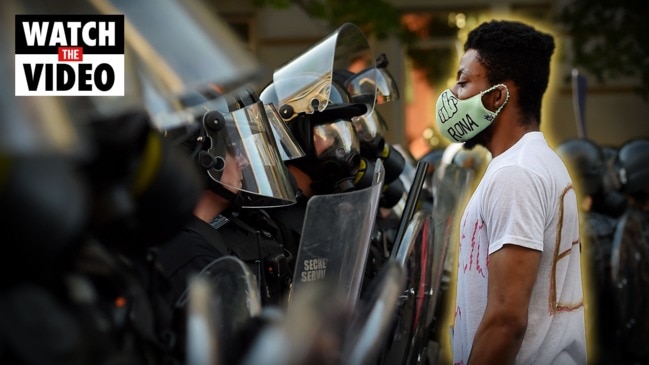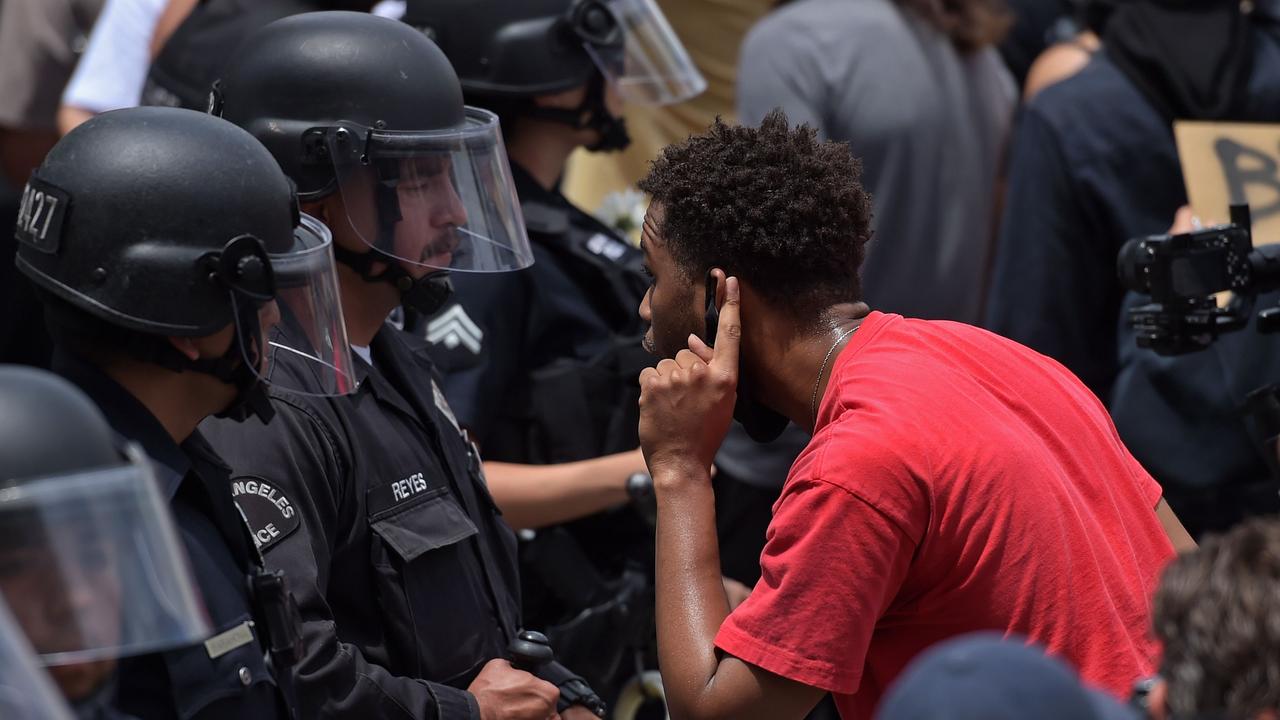#BlackLivesMatter protests show the militarisation of American police as COVID deaths continue
A crowd at one American protest had a question for police, and it’s being asked more and more as protests continue across the US.

Americans participating in ongoing protests or watching them unfold in the news and social media have noticed something about the police that isn’t sitting right with them, particularly in light of the equally ongoing COVID-19 pandemic.
It’s no secret America’s police departments has been increasingly militarised over the past two decades, many of them now using equipment meant for actual war zones to “protect and serve” citizens.
This is the result of a program that gave surplus military equipment to police departments, and while some of this equipment went to big city departments, others ended up in the hands of small country sheriff departments.
Did Iraq & Afghanistan Wars contribute to the militarization of US police departments?
— Paul Poast (@ProfPaulPoast) May 31, 2020
Data are pretty clear.
Surplus military equipment transferred to local law enforcement (via 1033 program) steadily rose starting in mid-00s, followed by spikes after 2010. pic.twitter.com/9MbIhBtjLK
A 2018 study published in the Proceedings of the National Academy of Sciences of the United States of America and compiled by Princeton University political scientist Jonathan Mummolo found that militarising the police didn’t actually do anything to protect officers or reduce crime, but did harm the public’s perception of them.
The study also came to the conclusion that militarised SWAT teams operating in the state of Maryland were more likely to be sent to Black communities, but acknowledged the overall costs and benefits were unclear due to data limitations.
The protests have again brought scepticism over the militarisation of police to the fore, but it’s raising other questions for Americans too.
The crowd is chanting “I don’t see no riot here, why are you in riot gear?†pic.twitter.com/DniKZKZkp9
— Brian Feinzimer (@bfeinzimer) June 2, 2020
Militarized police highly visible in this moment, but their deployment is routine, especially in black communities. Rationales for militarization--lowering crime, making police safer--are not supported by the data. Experiments show militarization may harm perceptions of police. https://t.co/LmWclQ1fTQ
— Jonathan Mummolo (@jonmummolo) May 31, 2020
At the same time as local police departments play around with the military’s leftover toys and seek to gain control over protests around the country, the United States is also leading the world in total deaths from COVID-19.
More than 106,181 people have died from COVID-19 so far, but frontline medical staff fighting the pandemic in American hospitals face anxious uncertainty about the equipment to protect against catching the virus themselves.
How come every cop is outfitted like an Avenger but health care professionals are out there fighting COVID wearing barrels on suspenders
— Alex Edelman (@AlexEdelman) May 30, 2020
According to a report from investigative journalism non-profit ProPublica, government agencies scrambling to find more person protective equipment (PPE) are throwing money away in the search.
ProPublica followed one man’s unsuccessful 36-hour mission to find 6 million N95 respirators as part of a $US34.5 million deal with the Department of Veterans Affairs.
Despite the man’s company having no experience selling medical equipment the department was so confident he’d be able to pull it off it agreed to pay a 350 per cent mark-up on the manufacturer’s list price.
RELATED: Sacked cop flees for safety

RELATED: NY police filmed ramming protesters
While few could have predicted the sudden surge in demand for PPE, the American health system, which has burdened millions with bills they can’t afford, is a contributing factor to inequality in America.
A photojournalist who lost her left eye covering protests in Minneapolis spotted the silver lining: at least her trip to the hospital resulted in her being tested for COVID-19.
“I do not have the plague, they tested me for COVID and that wouldn’t have happened otherwise,” Linda Tirado wrote on Twitter, lamenting the “f***ed world where I’m like ‘well they might have exploded my eyeball but at least it got me basic medical care!’”.
According to some on social media, the protests highlight other ways the class system in America and the way its supposedly blind justice is determined benefits some more than others.
While race is definitely a massive factor, class inequality, regardless of race, is another.
huh weird that they never thought about using it for covid testing or as a sanctuary where thousands of our unhoused could safely shelter in place https://t.co/6IitcC92Es
— josh androsky (@ShutUpAndrosky) June 2, 2020
More peaceful protestors and journalists have been jailed in the past week than all the bankers who were jailed for fraud during the financial collapse.
— Robert Reich (@RBReich) May 31, 2020
a government that can’t mobilize to house and feed us during a pandemic but can mobilize to beat us whenever we rise up tells you exactly where their priorities are
— jacq (@uncrushedvelvet) May 31, 2020
US government spending on police, prison & law courts
— Gabriel Zucman (@gabriel_zucman) June 1, 2020
vs. spending on cash (and quasi-cash) welfare, 1970-2018 pic.twitter.com/fBUaTKB31i
Don’t worry, America is just invading America to bring democracy to America
— Zack Bornstein (@ZackBornstein) May 31, 2020



